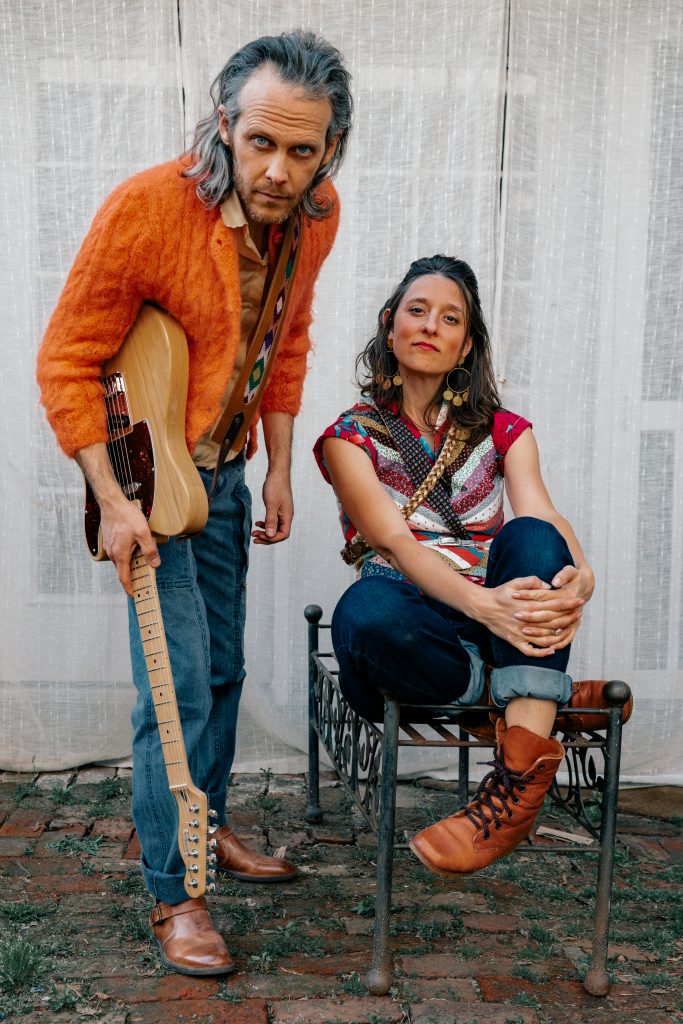
David Wax Museum Releases Homespun, Postmodern Folk Album Euphoric Ouroboric, Featuring Upbeat and Whimsical Single
April 2, 2021
Today David Wax Museum, the duo of David Wax and Suz Slezak, released the single “Juniper Jones” from Euphoric Ouroboric, their eighth full-length record and the first of several made in their home studio during the pandemic. Produced by their longtime collaborator Alec Spiegelman (Okkervil River, Kevin Morby, Pokey LaFarge, Woods, Anna & Elizabeth, Ana Egge, Cuddle Magic), the album will be released on April 16 via the band’s own Mark of the Leopard label.
Riding high from their 2019 release Line of Light (Nine Mile Records), the band was enjoying a new level of success just as the pandemic hit, with their national TV debut on CBS This Morning: Saturday, three distinct features on NPR’s World Cafe, and their song “Big Sur” on Netflix’s #1 show, Firefly Lane. Instead of lamenting the cancellation of their album release tour, they committed themselves to learning how to self record and quickly enlisted their favorite musical collaborators to make Euphoric Ouroboric.
Euphoric Ouroboric is the band’s first foray into the world of home recording and remote production, a significant departure after thirteen years of making studio records. The album’s title captures the emotion and experience of diving headfirst into this new way of recording, spending hour upon hour “in a jubilant dialogue with the self,” as David puts it. He elaborates, “‘Ouroboric’ comes from the mythological ouroboros snake that eats its own tail. I often felt like there was something self-referential and all-consuming about learning to record and edit myself. But, at the same time, I was having such a blast rediscovering my love for being ‘in the studio.’ So I wanted to celebrate this beautiful, weird feeling, hence, Euphoric Ouroboric.”
The album features contributions from special guests John Hadfield (Yo-Yo Ma, the Saturday Night Live band), Anthony da Costa (Sarah Jarosz, Joy Williams), Emily Hope Price (D’Angelo, Sting), and Philip Mayer (The Band’s Visit, Natalie Merchant), alongside David Wax Museum mainstays Danilo Henriquez (trumpet, drumkit) and David’s cousin and former Wax Museum member Jordan Wax (accordion).
“Juniper Jones,” a playful and upbeat song with a big catchy chorus, bursts at its sonic seams, complete with the band’s signature Mexican instruments. This time around, however, these rustic, handmade instruments are dramatically altered, distorted and processed. They sit nestled alongside the pleasantly warped sounds of flute and accordion, a surprising farfisa, David’s voice burbling through pedals, tasty electric guitar hooks, and a triumphant bridge for trumpet and saxophone. It’s the band at its light-hearted best, singing to Juniper, the seeker, who’s not satisfied with the world as it is and dreams of greatness.
“I was thinking of all those bands I knew from our early days in Boston, particularly when there would be one member shining effervescently in a band, and you just knew that band couldn’t contain her and that she was destined for something bigger,” explains David Wax. “I wanted to sing to Juniper, listen in on the questions of doubt in her head, and encourage her to break out on her own. Any of us can get in a rut and lose confidence as we’re setting out on a new course, and I wanted this song to be for all of us who have a little bit of Juniper Jones inside, knowing that we can’t sit back and wait for things to happen.”